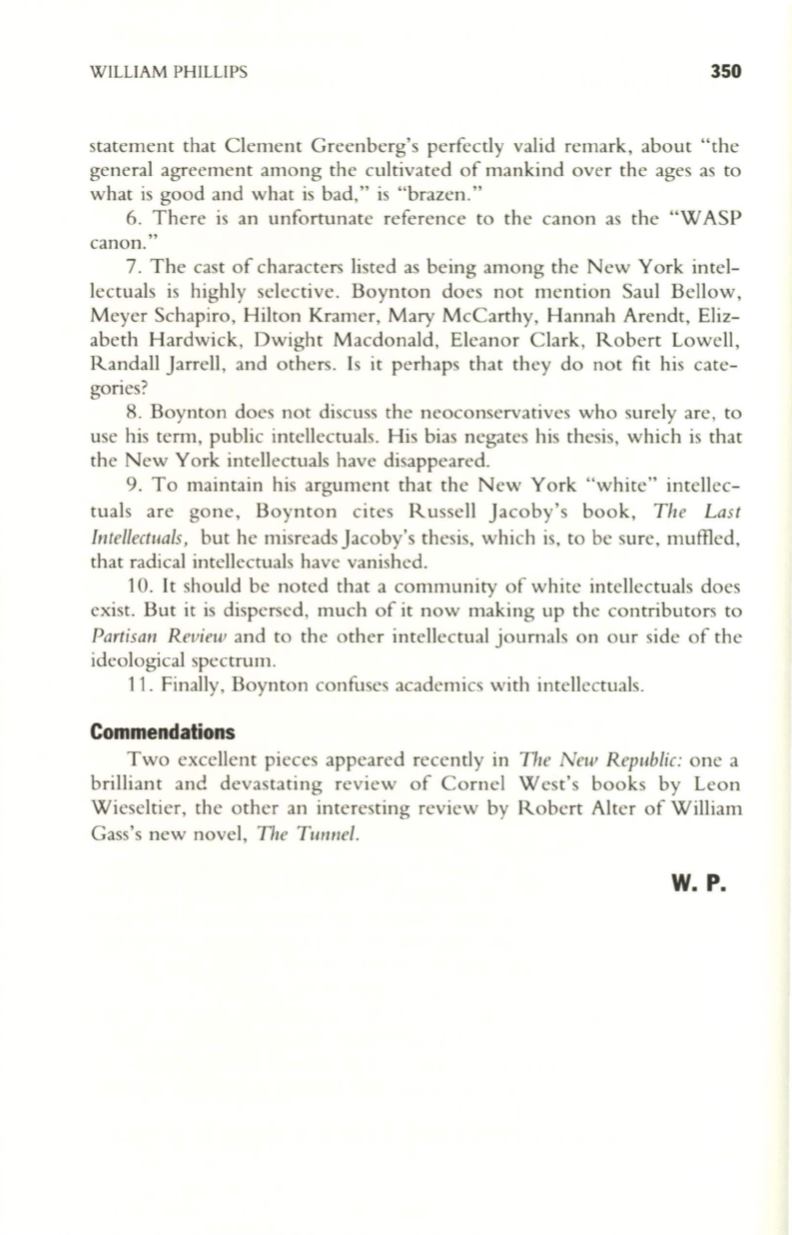
WILLIAM PHILLIPS
350
statement that Clement Greenberg's perfectly valid remark, about "the
general agreement among the cultivated of mankind over the ages as to
what is good and what is bad," is "brazen."
6. There is an unfortunate reference to the canon as the "WASP
canon."
7. The cast of characters listed as being among the New York intel–
lectuals is highly selective. Boynton does not mention Saul Bellow,
Meyer Schapiro, Hilton Kramer, Mary McCarthy, Hannah Arendt, Eliz–
abeth Hardwick, Dwight Macdonald, Eleanor Clark, Robert Lowell,
Randall Jarrell, and others. Is it perhaps that they do not fit his cate–
gories?
8. Boynton does not discuss the neoconservatives who surely are, to
use his term, public intellectuals. His bias negates his thesis, which is that
the New York intellectuals have disappeared.
9. To maintain his argument that the New York "white" intellec–
tuals are gone, Boynton cites Russell Jacoby's book,
The Last
Intellectuals,
but he misreads Jacoby's thesis, which is, to be sure, muffled,
that radical intellectuals have vanished.
10. It should be noted that a community of white intellectuals does
exist. But it is dispersed, much of it now making up the contributors to
Partisan Review
and
to
the other intellectual journals on our side of the
ideological spectrum.
11. Finally, Boynton confuses academics with intellectuals.
Commendations
Two excellent pieces appeared recently in
The New Republic:
one a
brilliant and devastating review of Cornel West's books by Leon
Wieseltier, the other an interesting review by Robert Alter of William
Gass's new novel,
The Tunnel.
w.
P.


